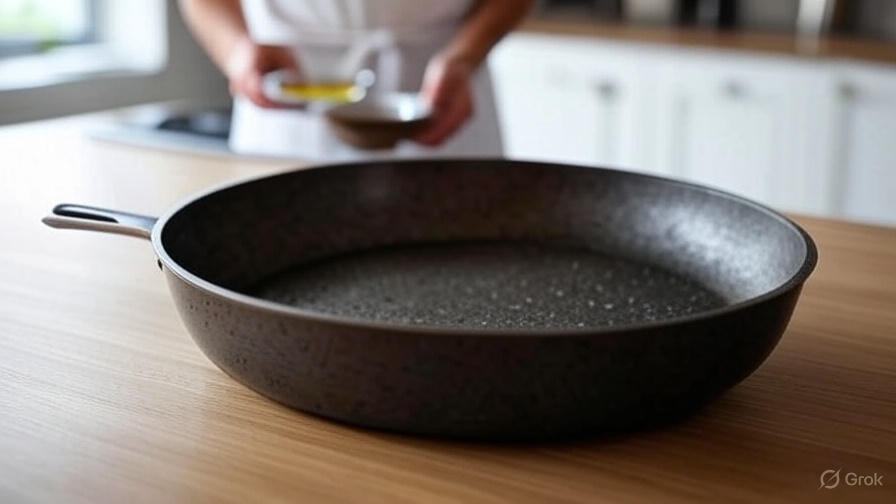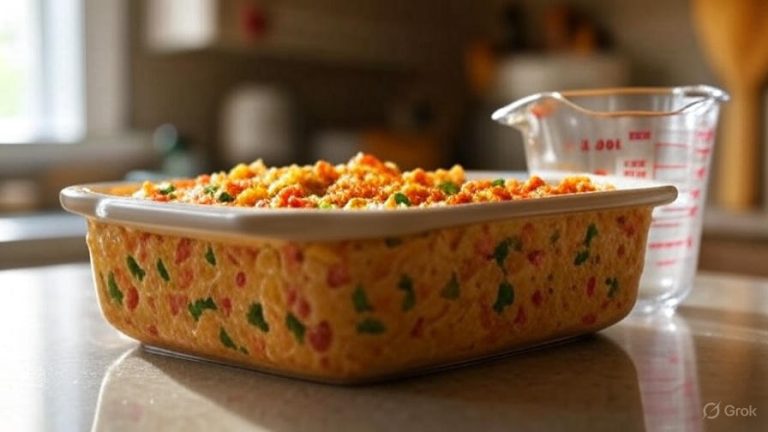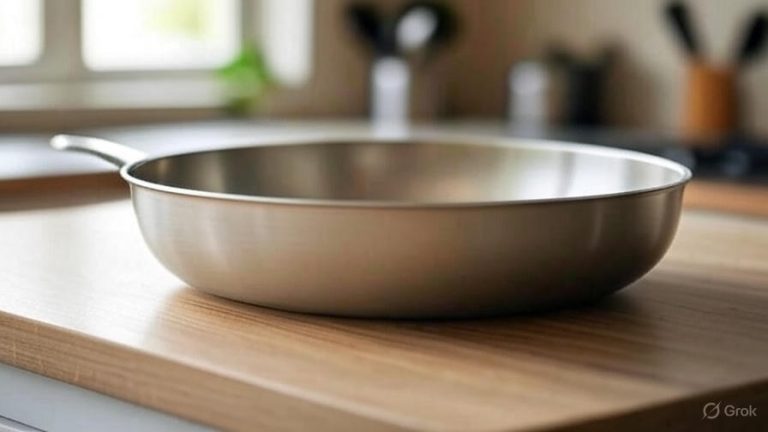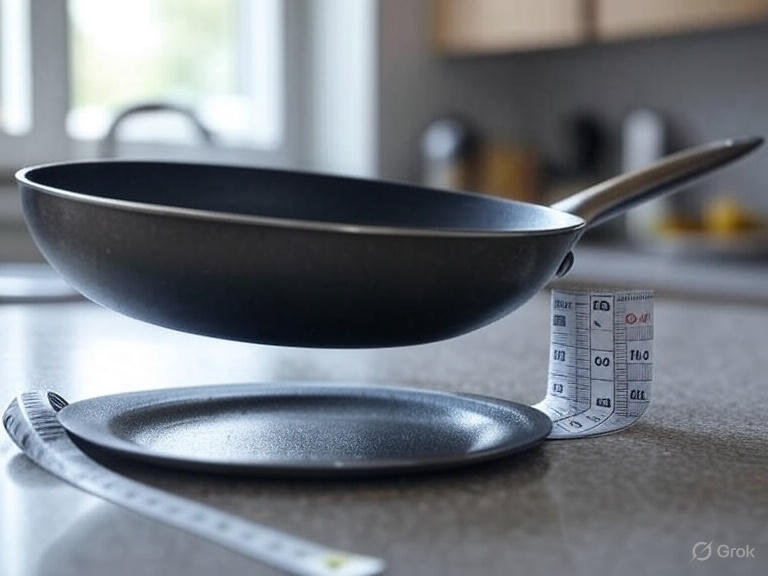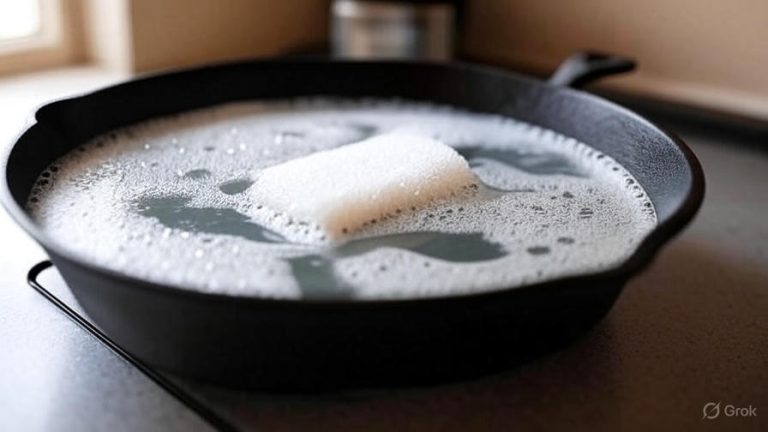How to Season a Carbon Steel Pan?
Carbon steel pans have become the go-to cookware for professional chefs and home cooking enthusiasts alike. These versatile pans combine the heat retention of cast iron with the responsiveness of stainless steel. However, to unlock their full potential, you need to master the art of seasoning.
Seasoning transforms your raw carbon steel pan into a naturally non-stick cooking surface. This process creates a protective layer that prevents rust, improves food release, and develops that coveted black patina that experienced cooks prize. Let’s dive deep into everything you need to know about seasoning your carbon steel pan properly.
What Makes Carbon Steel Pans Special
Carbon steel cookware offers unique advantages that set it apart from other materials. These pans heat up quickly and distribute heat evenly across the cooking surface. They can withstand extremely high temperatures, making them perfect for searing, stir-frying, and achieving restaurant-quality results at home.
The material itself consists of 99% iron and 1% carbon, creating a surface that bonds beautifully with oils and fats. This bonding process forms the seasoning layer that makes carbon steel pans naturally non-stick when properly maintained.
Professional kitchens rely on carbon steel for its durability and performance. Unlike non-stick coatings that can chip or wear away, a well-seasoned carbon steel pan actually improves with use. Each cooking session adds to the seasoning, creating an increasingly smooth and effective cooking surface.
The Science Behind Seasoning
Seasoning isn’t just coating your pan with oil – it’s a chemical transformation called polymerization. When you heat oil to its smoke point, the fat molecules break down and reorganize into long chains that bond permanently to the metal surface.
This polymerized oil layer creates a hard, smooth coating that repels water and prevents food from sticking. The process works best with oils that have the right molecular structure and smoke point for proper polymerization.
Temperature plays a crucial role in this transformation. Too low, and the oil won’t polymerize properly. Too high, and the oil burns before it can form the desired coating. Getting the temperature just right ensures you build up thin, even layers of seasoning that will last for years.
Essential Tools and Materials
Before you start seasoning, gather these essential items:
Oils for seasoning:
- Flaxseed oil (best for initial seasoning)
- Grapeseed oil (high smoke point, neutral flavor)
- Avocado oil (extremely high smoke point)
- Canola oil (budget-friendly option)
Cleaning supplies:
- Steel wool or chainmail scrubber
- Dish soap
- Paper towels or lint-free cloths
- Salt for scrubbing
Equipment:
- Oven (for oven seasoning method)
- Stovetop (for stovetop seasoning)
- Heat-resistant gloves
- Tongs for handling hot pans
The type of oil you choose affects the final result. Flaxseed oil creates the hardest seasoning layer but can be expensive. Grapeseed and avocado oils offer excellent results at more reasonable prices. Avoid oils with low smoke points like olive oil or butter, as they’ll burn before proper polymerization occurs.
Preparing Your New Carbon Steel Pan
New carbon steel pans come with a protective coating that prevents rust during shipping and storage. This coating must be completely removed before seasoning begins.
Start by washing the pan thoroughly with hot water and dish soap. Use steel wool or a chainmail scrubber to remove the protective wax or lacquer coating. Don’t worry about being gentle – carbon steel is tough and can handle aggressive scrubbing.
Some manufacturers apply a thicker protective coating that requires more effort to remove. If soap and steel wool aren’t enough, try using coarse salt as an abrasive. Scrub the entire surface, including the bottom and sides, until the metal appears uniformly gray and clean.
Rinse the pan thoroughly and dry it completely. Any remaining moisture will interfere with the seasoning process and could cause rust spots to form under your seasoning layer.
The Stovetop Seasoning Method
The stovetop method gives you more control over the seasoning process and works well for beginners. Heat the clean, dry pan over medium-high heat until it’s hot to the touch. The metal should feel warm but not smoking.
Apply a thin layer of your chosen oil using a paper towel or cloth. Work quickly to spread the oil evenly across the entire cooking surface, including the sides. The goal is to create the thinnest possible coating – excess oil will become sticky and uneven.
Continue heating the pan until the oil begins to smoke. At this point, the polymerization process starts. Keep the pan on the heat for 2-3 minutes after smoking begins, then remove it from the burner.
Allow the pan to cool completely before handling. The first layer of seasoning will appear golden or bronze. This initial layer provides the foundation for future seasoning coats.
Repeat this process 3-4 times for best results. Each additional layer deepens the color and improves the non-stick properties. The pan should develop a smooth, dark surface that feels slightly slick to the touch.
The Oven Seasoning Method
Oven seasoning creates more even results and works well for seasoning multiple pans simultaneously. Preheat your oven to 450-500°F (230-260°C). This temperature range ensures proper polymerization without burning the oil.
Apply oil to your clean pan using the same technique as the stovetop method. Wipe away excess oil with paper towels – the coating should be so thin it’s barely visible. Too much oil creates a sticky, uneven finish.
Place the oiled pan upside down on the middle oven rack. Put a sheet of aluminum foil on the rack below to catch any dripping oil. The upside-down position prevents oil from pooling in the pan’s center.
Bake for one hour, then turn off the oven and let the pan cool inside. This gradual cooling prevents thermal shock that could crack the seasoning layer.
Like the stovetop method, repeat this process several times. Each oven session builds up the seasoning, creating a darker, more durable surface. Plan to do 4-5 oven sessions for optimal results.
Maintaining Your Seasoned Carbon Steel Pan
Proper maintenance keeps your seasoning in top condition and extends your pan’s lifespan. After each use, clean the pan while it’s still warm but not hot. Hot pans can warp when exposed to cold water.
Use hot water and a soft sponge to remove food particles. For stubborn bits, add coarse salt and scrub gently. The salt acts as an abrasive without damaging the seasoning layer.
Avoid soap for routine cleaning – it can strip away seasoning over time. If you must use soap, choose a mild variety and use it sparingly. Rinse thoroughly and dry the pan immediately after washing.
Apply a light coating of oil after each cleaning while the pan is still warm. This maintenance oiling reinforces the seasoning and prevents rust. Wipe away excess oil with a paper towel.
Store your carbon steel pan in a dry location with good air circulation. Avoid stacking other cookware directly on the seasoned surface, which can scratch or chip the coating.
Troubleshooting Common Seasoning Problems
Even experienced cooks encounter seasoning challenges. Sticky or tacky surfaces usually result from using too much oil or insufficient heat during the seasoning process. Strip the sticky seasoning with steel wool and start over with thinner oil coats.
Uneven seasoning creates patches where food sticks. This happens when oil distribution is inconsistent or when the pan has hot spots. Re-season the entire surface, paying extra attention to problem areas.
Rust spots indicate moisture exposure or damaged seasoning. Remove rust with steel wool, then re-season the affected area. Prevent future rust by ensuring complete drying after each use and maintaining the oil coating.
Flaking seasoning often occurs when layers build up too quickly or when different oils are mixed. Strip the flaking areas and rebuild the seasoning gradually with consistent oil choices.
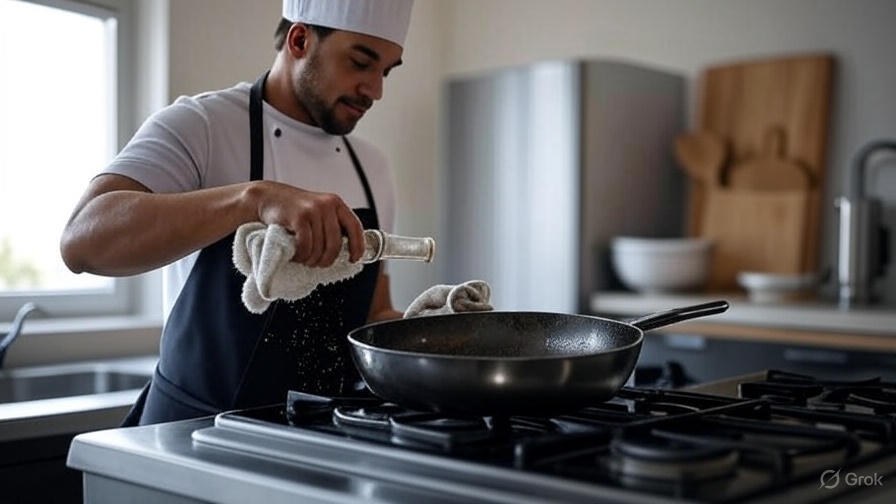
Advanced Seasoning Techniques
Professional chefs often use specialized techniques to achieve superior seasoning results. The “blue steel” method involves heating the pan until it turns blue from oxidation, then seasoning over this oxidized layer. This technique creates an extremely durable foundation.
Some cooks prefer the “potato peel” method for breaking in new seasoning. Cook potato peels with salt in the newly seasoned pan. The potato starch helps smooth the surface while the salt provides gentle abrasion.
Temperature control becomes crucial for advanced techniques. Use an infrared thermometer to monitor surface temperature precisely. Different oils polymerize best at specific temperatures, and knowing these ranges helps optimize your results.
Cooking Techniques That Build Seasoning
Certain cooking methods naturally improve your pan’s seasoning. Stir-frying with high heat and oil develops the coating while creating delicious meals. The combination of heat, fat, and movement creates ideal conditions for seasoning enhancement.
Bacon and other fatty meats release rendered fat that contributes to seasoning development. The natural fats polymerize just like applied oils, adding to the protective layer. Cook bacon frequently in your carbon steel pan to build up seasoning naturally.
Avoid acidic foods like tomatoes or vinegar-based sauces in newly seasoned pans. Acid can strip away fragile seasoning layers. Once your seasoning is well-established, the pan can handle acidic ingredients without damage.
Signs of Proper Seasoning
A properly seasoned carbon steel pan displays several key characteristics. The surface appears dark brown to black with a subtle sheen. Light reflects evenly across the cooking surface without bright spots or patches.
Water beads up and rolls around the surface rather than spreading out. This hydrophobic behavior indicates good seasoning coverage and polymerization. Oil spreads easily and evenly when added for cooking.
Food releases cleanly without sticking, especially proteins like eggs and fish. The pan develops what chefs call “non-stick” properties, though they differ from synthetic coatings. Properly seasoned carbon steel releases food through its smooth, polymerized surface.
Temperature response becomes more even as seasoning develops. Hot spots diminish, and the pan heats more uniformly. This improved heat distribution enhances cooking performance across all techniques.
Long-Term Care and Re-seasoning
Even well-maintained carbon steel pans need occasional re-seasoning. Heavy use, acidic foods, or cleaning mishaps can damage the protective layer. Plan to do a complete re-seasoning annually or when performance declines.
Monitor your pan’s condition during regular use. Dull spots, increased sticking, or rust formation signal the need for maintenance. Address these issues promptly to prevent further deterioration.
Build a routine that includes daily maintenance oiling and weekly deep cleaning. This consistent care preserves your seasoning and extends the time between major re-seasoning sessions.
Consider your cooking style when planning maintenance. High-heat cooking and frequent use actually help maintain seasoning, while occasional use may require more active care to prevent deterioration.
Conclusion
Mastering carbon steel pan seasoning opens up new possibilities in your kitchen. The process requires patience and practice, but the results reward you with superior cooking performance that improves over time.
Start with quality materials and follow the techniques outlined in this guide. Build your seasoning gradually through multiple thin coats rather than attempting shortcuts. Maintain your seasoned surface through proper cleaning and regular oiling.
Remember that seasoning is an ongoing process, not a one-time task. Each cooking session contributes to your pan’s development. Embrace the journey of building and maintaining your carbon steel cookware – the enhanced flavors and cooking performance make every effort worthwhile.
Your carbon steel pan will become a treasured kitchen tool that serves you for decades. With proper seasoning and care, it will develop into a naturally non-stick surface that rivals any synthetic coating while offering the durability and heat capacity that only metal cookware can provide.

